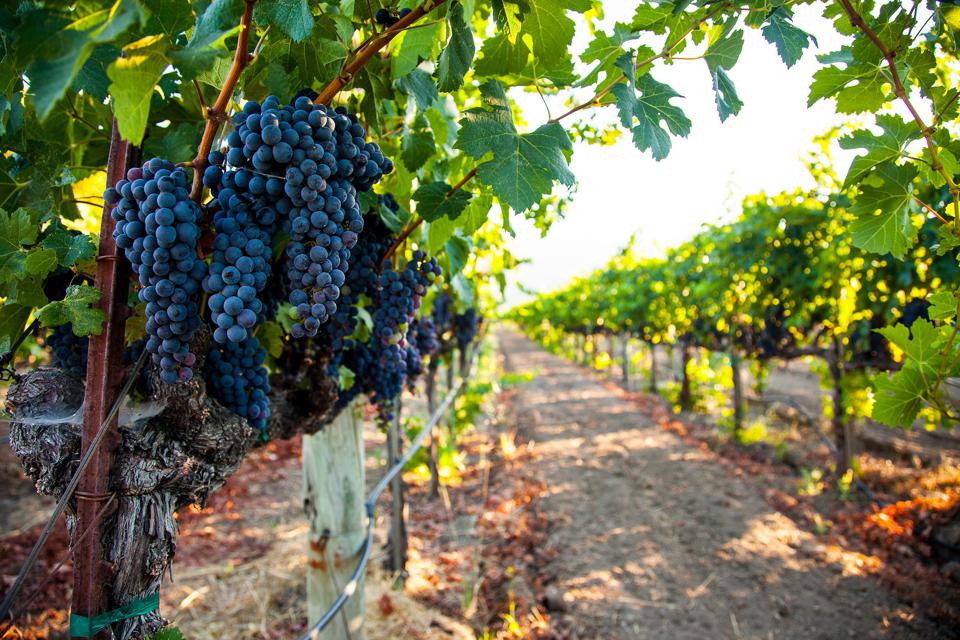We’ve all seen the devastation of wildfires, drought and now floods, but is California’s $46 billion wine industry prepared for client change? Climate change poses a significant threat to all of agriculture, but it has particularly disruptive potential for the wine industry. This is because wine quality is closely linked to weather and quality is linked to value. Even relatively subtle shifts in climate have the potential to disrupt the existing order in the wine market, particularly within the premium segment.
California’s $46 billion wine industry is certainly threatened by climate change, but it has more potential to adapt because it is not as tradition-bound as the famous wine regions of Europe. The California industry is also likely to benefit from its long-term focus on sustainability.
A recent data review of vintages in Napa and Bordeaux shows that there is already a trend towards higher temperatures, but that so far it has tended to help with wine quality in Bordeaux and has still not reached severely damaging levels in Napa.
However, the authors of that study conclude that we are nearing the “tipping point” and likely to see future vintages suffering in quality because of warmer temperatures. Adaptation will be the key moving forward. In the near term, some degree of climate resilience can be achieved through changes in vineyard management, but it may become necessary to take more radical steps like changing the varieties of grapes that are grown or blending with grapes from more diverse locations.
So why does this all matter? Wine grapes are an important industry in California involving 620,000 acres of vineyards. Based on the 2021 Crush Report, the growers received over three billion dollars for their fruit and the Wine Institute reports that the state’s wineries shipped 271.2 million cases with an estimated retail value of $45.6 billion. The institute has also documented the fact that the industry creates 325,000 jobs in-state and 786,000 overall. Wine-related tourism is also a big business. For instance, in 2015 there were 24 million wine country tourist visits.

How does Climate Change Impact Vineyards and Wine?
There are many potential impacts to consider. Climate Change will probably mean more frequent and severe droughts and torrential downpours, such as the one that California is currently experiencing. The availability of ground or surface water varies greatly between regions in the state, but this issue may inhibit any further planting and render some vineyards inoperable.
Severe temperature spikes can lead to sunburning and yield/quality loss for the fruit and those events are likely to become more common. Smoke exposure has been an issue in some recent years when wildfires burned in the hills near vineyards.
Pest issues are likely to become more challenging over time as insects go through more life cycles under warmer conditions as does the fungal pathogen, powdery mildew. If winters become warmer, the resulting lack of dormancy could lead to an uneven “bud break” that will alter later yield and crop uniformity.
But the biggest threat related to climate change has to do with wine quality. In each growing season, there is a stage called “Veraison” after which the sugar content of the grape rises, the acidity declines, and the key colour, flavour and aroma characteristics develop.
During that critical veraison-to-harvest period, wine quality involves what could be called a multi-level Goldilocks phenomenon in which the vines need “just right” conditions in terms of moderate temperatures, sunny days, cool nights or foggy mornings, and slight water stress. The closer the growing environment is to “just right” – the higher the value of the grapes and the wine.
For instance, the grapes from California’s relatively ideal Napa Valley are worth between $3,000 and $8,000 per ton while those from the much hotter Central Valley sell for $3-600/ton. In a premium growing area, wines made from the same variety of grape grown in the same vineyard and made by the same winemaker can differ in value by as much as twenty-fold because of the specific climatic conditions in a given year or “vintage” (Ashenfelter, 2010).
Regions that consistently enjoy more “just right” conditions are traditionally defined as “appellations,” such as Bordeaux, Burgundy, Reingau, Tuscany, and Rioja in Europe or Napa, Sonoma, or Central Coast in California. There is a fundamental wine industry concept called “terroir”(pronounced” tare WAHr”) which is the optimal combination of the grape variety, the soil and the climate of the growing area – something that is proven over time, highly valued, and then never altered.
Climate change threatens the very core of these traditions, but that does not mean that a region couldn’t continue to make good wine. It might just have to be a different one. Grape varieties differ in terms of their ideal temperature range and so one key adaptation option is to change varieties.

California and other New World growing regions all use the same grape varieties that have been grown for centuries in Europe, but they had the flexibility to use whichever ones worked well for their setting. Thus the Australians were able to create a following for Shiraz (actually Syrah) and the Argentinians promoted the minor Bordeaux blending variety, Malbec to fame.
But even though these varietals have momentum, there is the possibility of change. For instance, even though Napa Valley has built its reputation around Cabernet Sauvignon, which is originally from the Bordeaux region, it could shift to something like Zinfandel to deal with higher temperatures. Most European grape growers wouldn’t be given such options under current rules and laws. Australian and South American growers also share California’s somewhat open option to change variety.
The other way that the wine industry can adapt is in the hands of the winemaker. One way to get a wine that has a desirable mix of components is to blend grapes or finished wines from different growing areas and/or of different varieties. That was the strategy employed by the Bronco winery to make what came to be known as “Two Buck Chuck”– a reasonably good everyday table wine sold in the Trader Joe’s grocery chain under the Charles Shaw label, originally for $1.99/bottle (it now sells for $3).
Any sort of multi-geography blend would be anathema for most of the European industry, but in California, a wine given a specific variety label is only required to contain 75% of that kind of grape, and the remaining 25% can be used to blend in other varieties to deal with various quality challenges.
The California wine grape industry is heading into this tenuous future with significant preparation as part of its cutting-edge focus on sustainability.
The California Association of Winegrape Growers (CAWG) and the Wine Institute launched the non-profit California Sustainable Winegrowing Alliance in 2003 and since 2010 have offered a 3rd party certification. The participants measure things like water and nitrogen use in vineyards energy and water use and greenhouse gas emissions from the winery. In total 71 specific practices are considered, 30 of which are climate “hot spots”.
The focus on water use efficiency is one of the ways that the industry has already been preparing for climate change. The scientific and economics literature is replete with studies considering climate change and grapes/wine.
The bottom line is that the California wine industry is likely to survive assuming some degree of global climate action to head off catastrophic change. There may well be changes in terms of exactly what is produced in each sub-region, but wine lovers will continue to have both premium and affordable options. Will the European wine industry adapt? That remains to be seen.
SwiftERM is a Microsoft Partner company. Read more articles to help improve selling wine online and how hyper-personalisation is essential in wine ecommerce here.





